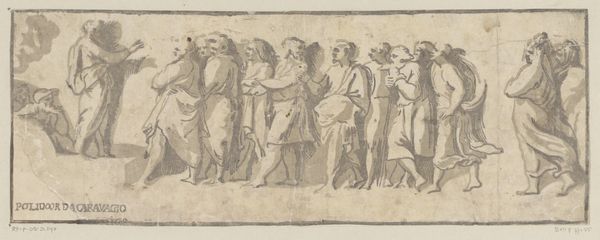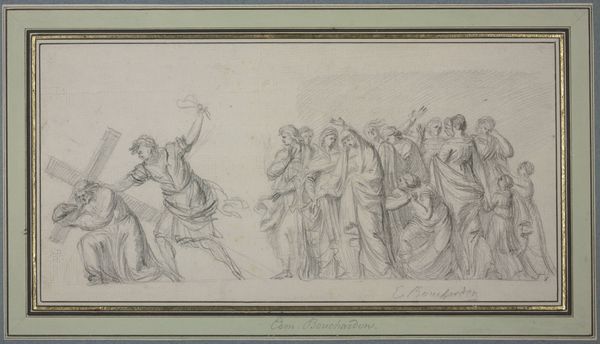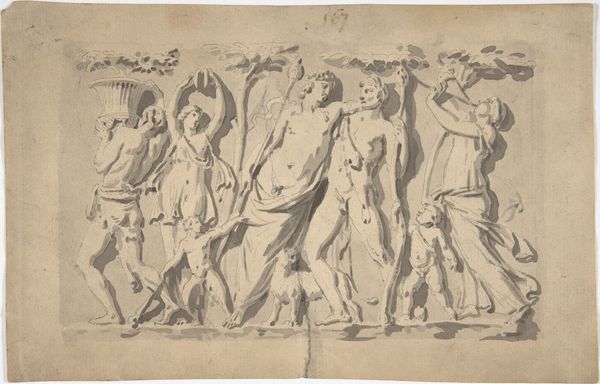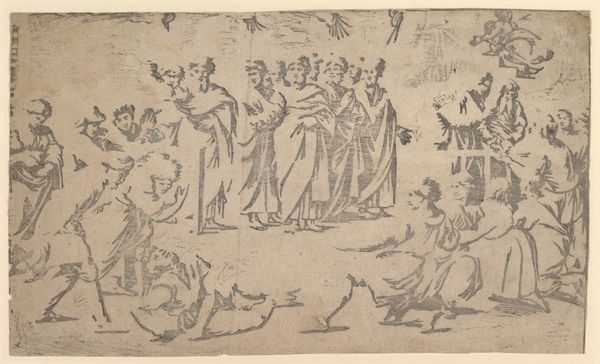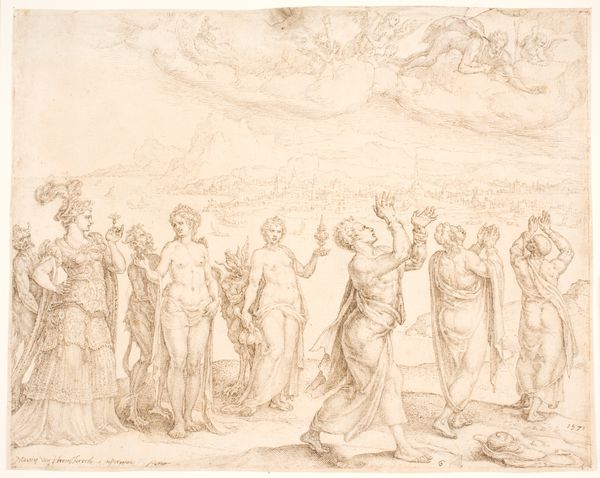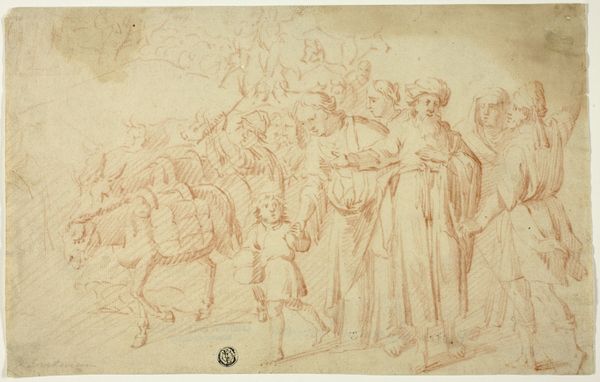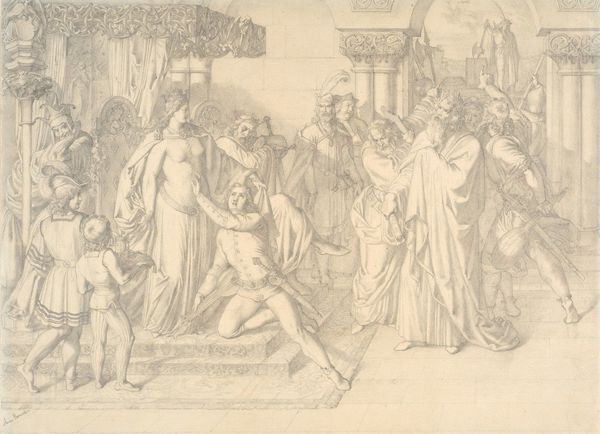
Bjergprædikenen. Udkast til forsvundet relief til Marmorkirken (portgavlene over hjørnevinduerne) 1758 - 1761
0:00
0:00
drawing, pen
#
drawing
#
aged paper
#
toned paper
#
sketch book
#
landscape
#
figuration
#
personal sketchbook
#
classicism
#
pen work
#
sketchbook drawing
#
pen
#
watercolour illustration
#
history-painting
#
storyboard and sketchbook work
#
academic-art
#
sketchbook art
#
watercolor
Dimensions: 208 mm (height) x 401 mm (width) (bladmaal)
Curator: Welcome. Here we see Johannes Wiedewelt's drawing, "The Sermon on the Mount," created between 1758 and 1761. This piece is a sketch for a relief that was intended for the Marble Church. Editor: It’s fascinating to see this preparatory drawing. The crisp lines and classical figures convey a strong sense of idealized humanity. The clothing and medium add to a mood of classical dignity and sobriety. Curator: Exactly. It’s important to remember that Wiedewelt, steeped in classicism, was working within specific parameters dictated by the patronage system of the time and the ambitions of the monarchy, specifically concerning how faith should be visually represented. The artist had the pressure to evoke ancient art traditions with the intent of expressing Danish identity and power through stone. Editor: The decision to portray the Sermon on the Mount as a relief would place the viewer as a witness in real time, embedding their perspective into the historical event, which inherently makes one reflect on what the cultural institutions deemed as important back then. The way it seems mass-produced suggests this art was designed to engage with social memory and shared experience, while prompting viewers to ponder and even reconsider these well-known social, religious and philosophical events. Curator: Furthermore, we must appreciate the craftsmanship involved. A sketch becomes a three-dimensional object on a grand architectural scale, affecting public space and potentially shaping religious sentiment of its viewers. It reveals the means by which images were disseminated, controlled and how a specific narrative was embedded into the architecture itself. Editor: Seeing the figures rendered in this manner does indeed allow insight into how stories are woven into our surroundings, reinforcing social and cultural identity, though whether we fully agree with the ideals those in positions of power have chosen for us is the open question to ponder, for me. Curator: Well said, and I agree! It allows us a glimpse of a moment of artistic creation that embodies complex interactions between individual skill and broader social processes, don't you think? Editor: I do. Now I think I’ll go ponder exactly that in a coffee shop somewhere!
Comments
No comments
Be the first to comment and join the conversation on the ultimate creative platform.


